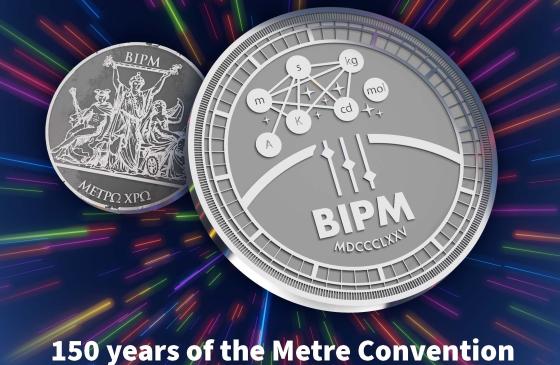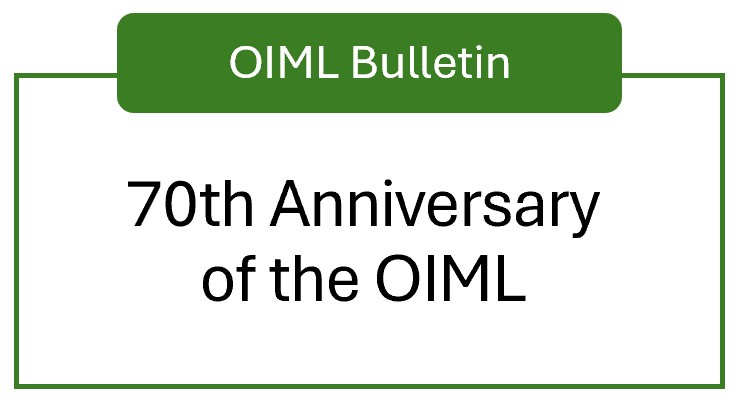ISO

MoU between ISO and the OIML

The International Organization for Standardization (ISO) and the OIML signed a first Memorandum of Understanding on 10 June 1966. Developments in both Organizations, for instance the OIML Mutual Acceptance Arrangement (MAA) or certain OIML/ISO joint Publications such as OIML R 99/ISO 3930, led to the necessity to revise this MoU. Therefore ISO, represented by its (former) Secretary General Mr Alan Bryden and the OIML, represented by the President of the International Committee of Legal Metrology Mr Alan Johnston, signed a revised Memorandum of Understanding on 9 December 2008. With the launch of the OIML Certification System (OIML-CS) on 1 January 2018, a further revision of the MoU will be instigated.
Background
The background to this new MoU is the formalization of the growing cooperation between ISO and the OIML. Further to the statement that the OIML and ISO are considered as standardizing bodies in the sense of the Technical Barriers to Trade Agreement of the World Trade Organization (WTO TBT), this MoU is a formal technical agreement between the two Organizations which recognizes the specificity of legal metrology and the legitimacy of the OIML to draw up documents addressing legal metrology equipment and issues, including guidance documents for conformity assessment procedures.
A new toolbox
The MoU provides tools to be utilized in the day to day activities of both Organizations, and its revision has given rise to the necessity for the OIML to review existing technical liaisons with ISO and their status for each OIML TC/SC and to permit the establishment of new liaisons between ISO and OIML TCs and SCs.
From an administrative point of view, the OIML is a Category 'A' Liaison Organization for the Technical Committees concerned, which means that OIML TCs/SCs can make effective contributions to the work of their ISO counterparts.
The BIML contact person for each OIML TC/SC (see the table summarizing the liaisons) is responsible for managing the detailed liaisons which enable the OIML and ISO to exchange information and to comment on each other's projects with a view to harmonizing their technical work.
Jointly developed Publications
Close relations between the two Organizations can lead to joint working groups being set up; meetings of ISO and OIML TCs and SCs may be co-located, during which the stakeholders of both Organizations can participate in the drawing up of "Jointly Developed Publications", which are identical in content but which are published by both Organizations under their own individual rules. The Forewords identify the corresponding ISO and OIML Publications, and reiterate the fact that they are in fact identical. Obviously, "Jointly Developed Publications" that are published by the OIML remain downloadable from the OIML web site Publications page and are distributed free of charge in the same way as all other OIML Publications.
ISO Fast-track Procedure
Another tool formalized by the OIML/ISO MoU is the utilization of the ISO Fast-track Procedure. For instance, at its 43rd Meeting in Sydney (October 2008), the CIML decided to disband OIML TC 10/SC 5 Hardness standardizing blocks and hardness testing machines (Resolution 26) and to withdraw all the remaining Publications of this OIML Subcommittee (Resolution 24), meaning nine Publications in total:
V 3 Hardness testing dictionary (quadrilingual);
R 9 Verification and calibration of Brinell hardness standardized blocks;
R 10 Verification and calibration of Vickers hardness standardized blocks;
R 11 Verification and calibration of Rockwell B hardness standardized blocks;
R 12 Verification and calibration of Rockwell C hardness standardized blocks;
R 36 Verification of indenters for hardness testing machines;
R 37 Verification of hardness testing machines (Brinell system);
R 38 Verification of hardness testing machines (Vickers system);
R 39 Rockwell hardness machines.
Without the signature of the MoU, this would have led to a loss of information. Applying the ISO Fast-track Procedure to these Publications allowed responsibility for them to be transferred from OIML TC 10/SC 5 to the relevant ISO TC or SC.
In the case of OIML TC 10/SC 5 Publications, it could be expected that ISO TC 164 or TC 164/SC 3 will become responsible for these nine Publications. After this transfer of responsibility it will be possible for ISO to publish (and sell) these "ex-OIML" Publications as ISO Standards, under ISO rules. The foreword of such an ISO Standard includes an indication of the OIML Publication as the source, with its equivalent OIML designation.
It should be noted that the ISO Fast-track Procedure does not automatically convert an OIML Publication into an ISO Standard. The relevance of the OIML Publication is analyzed during the procedure, and it may be concluded that the Publication is not relevant and should in fact not be published by ISO.
Conclusion
This revised MoU was signed in 2008 and was immediately applied when publishing OIML R 99:2008. A second direct application is the revision of OIML R 49, carried out in collaboration with ISO which is also revising its ISO 4064 Standard in order to arrive at a new "Jointly Developed Publication".
OIML TCs and SCs are therefore invited to strengthen their relations with the relevant ISO TCs/SCs with which they enjoy liaisons, via the respective BIML contact persons.

CIML President, 2006-2011

Alan Bryden -
Former ISO Secretary General






